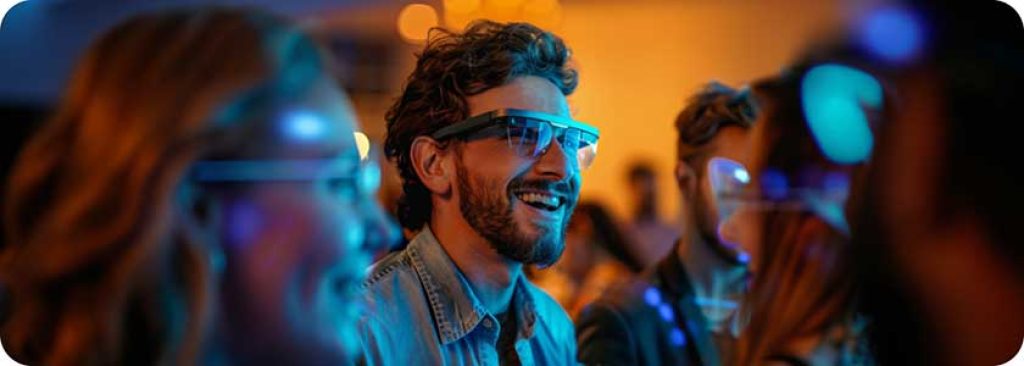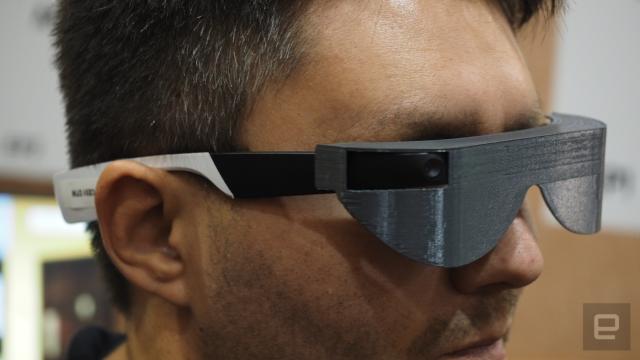Enhancing Availability Through Assistive Innovation for the Blind
The integration of assistive innovation for the blind stands for a critical innovation in access, essentially altering how people navigate their settings and engage with culture. As we explore the varied kinds of assistive gadgets and their tangible impacts on day-to-day living, it becomes vital to take a look at how continuous technical developments are reshaping the landscape of assistance for the blind community.
Overview of Assistive Technology
Assistive innovation describes a series of devices and software program developed to boost the abilities of individuals with impairments, consisting of those that are blind or aesthetically damaged. This technology plays a crucial duty in advertising independence and enhancing the lifestyle for users. By providing alternative techniques for accessing information and executing day-to-day tasks, assistive modern technology empowers individuals to navigate their atmospheres better.
The development and implementation of assistive technology welcome a range of principles focused on fostering access. These principles include user-centered style, which prioritizes the demands and choices of the person, and the integration of technology right into daily tasks. Such innovations ensure that assistive gadgets are not just functional yet easy and additionally user-friendly to make use of.
Moreover, assistive innovation includes a diverse range of solutions, from low-tech options like magnifiers to sophisticated advancements such as display visitors and Braille displays. The recurring development of this area is driven by the need to attend to the distinct obstacles encountered by individuals with visual impairments (Wearable technology for low vision). As innovation remains to advance, the capacity for enhancing access and advertising inclusivity continues to be appealing, ultimately contributing to a much more equitable culture

Sorts Of Assistive Devices
Various kinds of assistive tools are readily available to support individuals that are visually damaged or blind, each developed to resolve certain needs and obstacles. These tools can be generally categorized right into three major types: low-tech, mid-tech, and high-tech services.
Low-tech devices include things such as magnifiers, Braille labels, and responsive maps. These are fairly easy tools that enhance the individual's capability to connect with their environment without calling for complicated modern technology.
Mid-tech gadgets typically entail much more sophisticated functions, such as digital magnifiers and mobile Braille note-takers. These tools can provide functionalities like speech output, permitting individuals to accessibility info much more successfully.

Effect On Daily Living
The availability of various assistive gadgets substantially improves the high quality of life for individuals that are aesthetically damaged or blind, affecting their day-to-day living in extensive methods. By incorporating technologies such as screen readers, Braille displays, and audio description services into their regimens, individuals obtain better autonomy and self-reliance. These devices facilitate accessibility to details, enabling individuals to carry out daily jobs, such as reviewing emails, navigating public spaces, and appreciating media content.
Moreover, assistive tools equip individuals to involve more completely in social communications and area activities. The look what i found ability to use mobile phones furnished with access features enables for seamless communication and link with others. This connection cultivates a sense of belonging and reduces sensations of seclusion.
In professional setups, assistive technology supports productivity by allowing individuals to full work jobs successfully. Devices like voice recognition software and specialized magnifying tools make it possible for customers to take part in the workforce on equal footing with their sighted peers.

Improvements in Modern Technology
Current technological advancements have significantly transformed the landscape of tools readily available for individuals that are aesthetically damaged or blind. The integration of expert system (AI) and artificial intelligence has generated applications that enhance navigating and things recognition. For instance, mobile phone applications can currently use AI to determine and explain surroundings in real-time, supplying individuals with beneficial contextual info.
Additionally, improvements in haptic technology have led to the growth of smart canes equipped with sensors that spot challenges and supply responsive responses. This empowers customers to browse their environment with raised confidence and find an eye doctor independence. Advancements in text-to-speech software and braille screens have actually improved the accessibility of electronic content, enabling for smooth interaction with numerous media.
Wearable innovations, such as clever glasses, are additionally making strides in aiding aesthetic disability. As technology continues to develop, the possibility for also more transformative devices remains on the perspective.
Future Trends and Innovations
As modern technology rapidly advances, the future of assistive devices for individuals that are blind holds tremendous pledge. Technologies in expert system (AI) and equipment understanding are poised to transform the method blind individuals connect with their environments. For instance, AI-driven applications are being developed to boost things recognition, enabling customers to determine and browse their surroundings with higher ease and precision.
In addition, innovations in haptic responses technology are enabling the creation of responsive maps and navigating help that give real-time info through touch. These innovations not only improve wheelchair yet likewise foster freedom. Furthermore, wearable devices geared up with augmented fact (AR) functions are emerging, offering users visual details via audio descriptions, thereby bridging the gap between the digital and physical worlds.
In addition, the combination of smart home technology offers new chances for availability, enabling people to regulate their living settings with voice commands or smartphone applications. As collaboration in between technology programmers and the blind community continues, the focus on user-centered design will certainly make sure that future innovations are tailored to fulfill the distinct demands of this populace (Wearable technology for low vision). The trajectory of assistive modern technology promises a more inclusive and empowering future for individuals who are blind
Verdict
In final thought, assistive technology plays an essential duty in improving availability for individuals with visual disabilities. Continual innovations in technology and user-centered layout make certain that these devices cater efficiently to the unique demands of the blind community.
The combination of assistive modern technology for the blind stands for an essential advancement in access, basically changing how individuals browse their atmospheres and engage with society.Assistive innovation refers to a variety of gadgets and software application created to enhance the capacities of people with handicaps, including those who are blind or aesthetically impaired. Wearable technology for low vision.As technology rapidly advances, the future of go to this web-site assistive tools for individuals who are blind holds enormous assurance. The trajectory of assistive innovation assures a more empowering and comprehensive future for individuals who are blind
In final thought, assistive modern technology plays an important duty in improving ease of access for individuals with aesthetic disabilities.